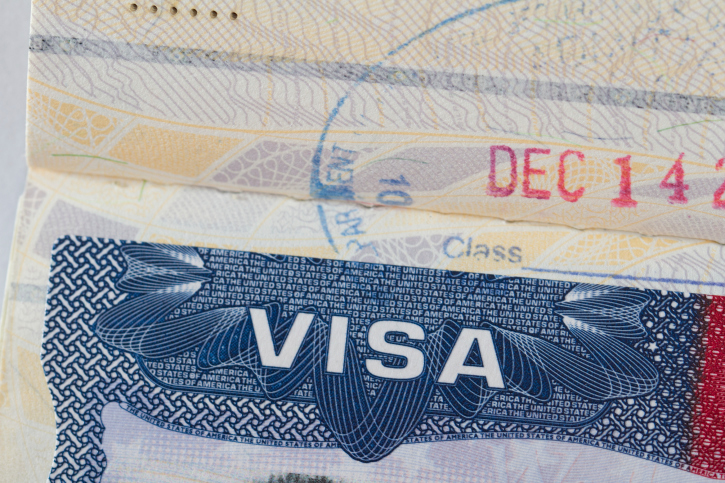The hidden world of labor trafficking

When it comes to human trafficking, we often hear about victims being kidnapped or violently taken from their homes. But what about people who are forced into labor in the U.S.?
In a new study released Tuesday researchers from Northeastern University in collaboration with the Washington-based Urban Institute examined the somewhat hidden networks of labor trafficking in the United States. They found that 71 percent of labor trafficking victims entered the country on a legal temporary visa, only to find out that the employment offices they’d worked with in their home country were fraudulent, according to co-author Amy Farrell, an associate professor of criminology and criminal justice at Northeastern.
The study is the largest to date to examine forced labor patterns in the U.S. Researchers at Northeastern and the Urban Institute were tasked with studying the organization, operation, and victimization of labor trafficking in America. In addition to Farrell, the co-authors from Northeastern were Jack McDevitt, associate dean of the College of Social Sciences and Humanities; Katherine Bright, research assistant at the Institute on Race and Justice; Rebecca Pfeffer, a former doctoral student in the School of Criminology and Criminal Justice; and Ryan Heitsmith, an undergraduate student in the School of Criminology and Criminal Justice.
The researchers examined closed victim case files from four cities and interviewed labor trafficking victims, law enforcement officials, and legal advocates. Labor trafficking victims were victimized across a variety of work venues. The most common venues of exploitation in this study were agriculture, hospitality, domestic service in private residences, construction, and restaurants.
Control over a worker’s immigration status was a powerful tool used by traffickers to keep victims in situations of forced labor/labor trafficking, the researchers found. Victims are often recruited in their home country by people working on behalf of third- or even fourth-party employment agencies and who promise good jobs in the U.S. Workers are coerced or physically forced into agreeing to these jobs, and are either given a legal visa to travel, or smuggled into the United States.
Once in the U.S., many victims labor in plain sight, in industries such as construction, domestic service, and hospitality. In order to keep workers in forced labor, the study found that perpetrators use physical and psychological abuse, wage theft, extortion and threats of violence against the workers or their families.
“People often think of labor trafficking situations as merely ‘bad jobs,’” said Farrell, whose own research has focused largely on how America’s criminal justice system responds to cases of human trafficking. “We found labor trafficking victims experienced serious and often long-term harms including physical injuries, and psychological and emotional problems in response to trauma, depression and fear. Victims often felt dehumanized by their exploitation and lost hope when their efforts to seek help and draw attention to their abuses went unrecognized.”
THE STUDY: BY THE NUMBERS
- 61 percent of the victims had never met their traffickers before being introduced to them via friends or family members. In 30 percent of cases, the person who ensnared the victim was actually part of his or her social circle.
- Approximately 54 percent of the cases showed that coercion was used to recruit victims, and 48 percent showed that fees were paid. These fees are often cripplingly high—$6,150 on average.
- Roughly 69 percent of victims in the study were unauthorized residents by the time they escaped and received help from services organizations.
In the study, the researchers also found that a general lack of awareness of the issue led to law enforcement officials not prioritizing labor trafficking cases, leaving many victims to escape on their own. Once victims escaped, the research found that many lived for months or years before being connected to service providers who could help them due to a lack of awareness or outreach. Victims struggled to secure work and often found themselves back in low-wage jobs where they faced the possibility of further exploitation.
The report provides policy and practice recommendations to combat the problem of forced labor that continues to occur in the United States. These recommendations include amending immigration and labor laws to reflect the ongoing issue of forced labor and increasing training for law enforcement officials at all levels to ensure that cases are properly identified and prosecuted. Heightening awareness of labor trafficking is critical, the researchers said.





